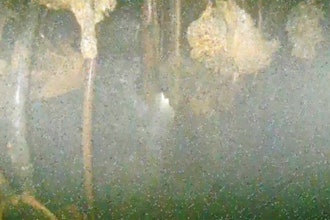NORTH CHARLESTON, S.C. (AP) -- Moving slowly on a floating crane and a barge, two key parts for what will be the world's largest wind turbine test unit arrived in North Charleston on Thursday.
A four-story tall gearbox and a giant steel connecting ring in a mammoth box were brought down the Cooper Rover to Clemson University's Wind Turbine Drive Train Testing Facility.
The $100 million facility will be dedicated in November and the first tests of prototype turbine drive trains are expected in the summer of 2014, said Peter Hull, a Clemson spokesman.
There are only two other such testing facilities, one in Spain and one in Colorado. But the Clemson site will test far larger units.
The gearbox and connecting ring will be part of a 400-ton unit capable of testing drive trains for wind turbines that can produce 15 megawatts - enough energy to power 6,000 homes. A 15-megawatt turbine would likely have blades reaching 100 yards above the ocean surface.
Earlier, a 150-ton unit, capable of testing smaller turbines that can produce 7.5 megawatts of power, arrived at the Clemson facility. Using the larger units offshore would mean the same power could be generated with fewer units needing maintenance and repair.
The test facility is in a huge warehouse that was once used by the Navy and is more than 70 years old. The building has been retrofitted to withstand both earthquakes and hurricanes.
The turbine testing facility is not far from a fault that caused the devastating 1886 quake that killed 110 people. In 1989, Hurricane Hugo, a Category 4 hurricane with 135 mph winds, came ashore just north of Charleston.
The national Bureau of Ocean Energy Management announced in February of last year assessments found there are no significant environmental impacts from issuing wind energy leases in federal waters off the mid-Atlantic coast.
Last, Virginia Dominion Power submitted a successful $1.6 million bid to lease nearly 113,000 offshore acres for the development of wind turbines that could power 700,000 homes.
The Department of Energy gave Clemson $45 million in federal stimulus money for the test facility, with state and private donors providing another $53 million. Clemson also plans a graduate center on its 26-acre campus in North Charleston with experts in wind technology.






















